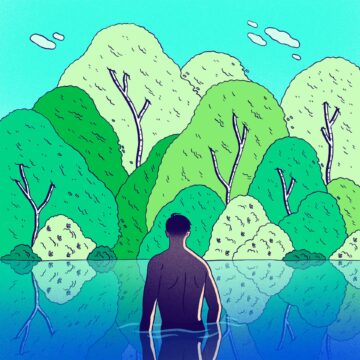Joshua Rothman in The New Yorker:
 In “Living on Earth: Forests, Corals, Consciousness, and the Making of the World,” Peter Godfrey-Smith, a philosopher of science, asks about the relationship between human beings and nature. He starts by considering our place in the broader time line. Scientists often emphasize our belatedness: a biologist might stretch her arms wide, explain that the tip of her left middle finger represents the beginnings of planet Earth, and then say that all of human history could fit into the tip of the opposite finger. “If we stick to our species, then we do rush on in a half-dressed flurry at the very end,” Godfrey-Smith concedes. “But suppose we think of ‘us’ as life as a whole.” Earth is four and a half billion years old, and life has existed here for 3.7 billion; meanwhile, the universe is about fourteen billion years old. This means that we’ve been around for “over a quarter of the total span,” Godfrey-Smith writes. From this perspective, we’re not freshmen, but seniors.
In “Living on Earth: Forests, Corals, Consciousness, and the Making of the World,” Peter Godfrey-Smith, a philosopher of science, asks about the relationship between human beings and nature. He starts by considering our place in the broader time line. Scientists often emphasize our belatedness: a biologist might stretch her arms wide, explain that the tip of her left middle finger represents the beginnings of planet Earth, and then say that all of human history could fit into the tip of the opposite finger. “If we stick to our species, then we do rush on in a half-dressed flurry at the very end,” Godfrey-Smith concedes. “But suppose we think of ‘us’ as life as a whole.” Earth is four and a half billion years old, and life has existed here for 3.7 billion; meanwhile, the universe is about fourteen billion years old. This means that we’ve been around for “over a quarter of the total span,” Godfrey-Smith writes. From this perspective, we’re not freshmen, but seniors.
A lot separates us from the kind of life that existed billions of years ago.
More here.
Enjoying the content on 3QD? Help keep us going by donating now.
